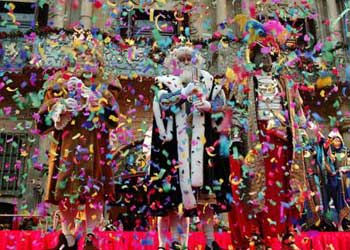East Harlem Arts & Culture on Dipity.
This video is credited to NewsLiteracyProject on YouTube.com, and shows the changing neighborhood, the different attitudes of the neighborhood, and how all the differences make East Harlem the way it is.
(http://www.youtube.com/watch?v=eEx0AmqfB1Y&feature=related) (2)
Education
- There is currently a coalition to renovate PS 109, which was shut down after the city deemed it “unsafe”
- Only 36% of elementary and intermediate students read at grade level
- (3)
- Leonard Covello was principal of Benjamin Franklin High School, which was later renamed Manhattan Center for Science and Mathematics
Food
- Itzocan Bistro (Spanish) – 1575 Lexington Avenue
- La Hacienda (Mexican) – 219 E. 116th Street
- Piatto D’Oro (Italian) – 1429 Fifth Avenue

Piatto D'Oro Restaurant (14)
- The KIOSK (Morrocan) – 78-80 East 116th Street
- Cafe Saint Germain (French) – 1695 Lexington Avenue
- (8)
Food History
- Italians who immigrated to America in the early 1900’s enjoyed more luxurious foods than they had in Italy
- The Italian immigrants worked hard in America and earned a higher social status in America, which was manifested in the foods they ate
- (11)
- Hispanic restaurants and eateries placed importance on utilizing ingredients from their home countries while maintaining cheap prices for the poor Latin American population

Puerto Rican Style Rice And Beans (18)
Festivities
- El Museo del Barrio’s annual Three Kings Day Parade-includes animals, floats and music (5)

Three Kings Day Parade (16)
- The Italian Feste is celebrated each July
- Fiesta De San Juan
Performing Arts
- Harbor Conservatory for the Performing Arts – Provides dance, music, and acting lessons to children.
- Los Pleneros de la 21 – Puerto Rican music organization.

Puerto Ricans express themselves through music and dance (17)
- Manna House Workshops – Provides music lessons and training
- Uptown Dance Academy – Provides dance classes for children.
- Union Settlement Association Theatre – Union Settlement Association provides assistance to many East Harlem families, including programs in acting and other performing arts.
- (3)
Religion
- All Saints Catholic Church – A Church and School built in 1894
- Church of the Holy Agony – Located on 3rd Avenue in East Harlem
- The Church of Mt Carmel
- Saint Cecilia’s Church
- Manhattan Grace Tabernacle – Nondenominational church at 2nd Avenue and East 103rd Street (13)
- Reformed Low Dutch Church of Haarlem (oldest church in Harlem)
- The Feste was a religious celebration to honor the Madonna
Murals
- Zapatista Mural – 2nd Ave. And 117th St.
- “The Spirit of East Harlem” on 104th Street and Lexington was created by Hank Prussing and his apprentice, Manny Vega in 1973 to pay homage to the neighborhood and its residents. It was retouched around 1999 by Vega. (10)
- “Calle de Suenos” was created in about 1989 by Brookie Maxwell, a New York artists, and neighborhood children. The children used this mural portrayed their “perfect New York City street.” (16)
Museums
- The Museum of the City of New York: current exhibits include “Joel Gray/ A New York Life,” and “Moveable Feast:Fresh Produce-The New York City Green Cart Program.” (4)
- El Museo del Barrio: hosts the annual Three Kings Day Parade
- National Museum of Catholic Art and History: features many monuments with Catholic symbols such as the Ten Commandments, the Holy Rosary and the Holy Family
- National Academy Museum: includes painting and sculpture from the 19th century into the 21st century
- Somniac Art Gallery: current exhibits include Carlysle Vicenti and Pablo Casacuberta
- The art and architecture of the “casitas” (informal buildings on vacant lots) has been featured in many museums
- (3)
- The Raices Latin Museum Collection, a program in the Harbor Conservatory for the Performing Arts, showcases Latin music in New York City for the public to enjoy. (17)
Icons
- The Madonna: Religious symbol important for the Italians immigrating to America – A festival was held each July in honor of the Madonna. Italians went to the Madonna to pray all year round. Over time, as Puerto Ricans started to outnumber Italians, Latin Americans started to include themselves in the celebration.
Family
- Italian life centered around the domus, which incorporated more than just one’s biological family
- Members of the same community were part of the same domus and nothing was kept secret from other members of the domus
- All people had to be treated properly (with respect), because it was impossible to know everyone who was part of your domus (9)
- Latin American families were very close, both in bond and in there homes. Often due to monetary restrictions a large (11-16 people) Latin American family would occupy a home of only 2 rooms.
Community Parks and Gardens
- Thomas Jefferson Park: opened in 1905
- La Casita Community Garden: located at 233 E. 119th St
- Target East Harlem Community Garden: located at 415-417 E. 117th St
- The Home Depot Community Garden: located at 421 E. 117th St
- Family Garden: located at 431 E. 114th St
- Los Amigos Community Garden: located at 326 Pleasant Ave
- Rodale Pleasant Park Community Garden: located on E. 114th St
- El Catano Community Garden: located at 171 E. 110th St
- 103rd Street Communit Garden: located at 105 E. 103rd St
- Herb Garden: located at 176-178 E. 111th St
- (6)







